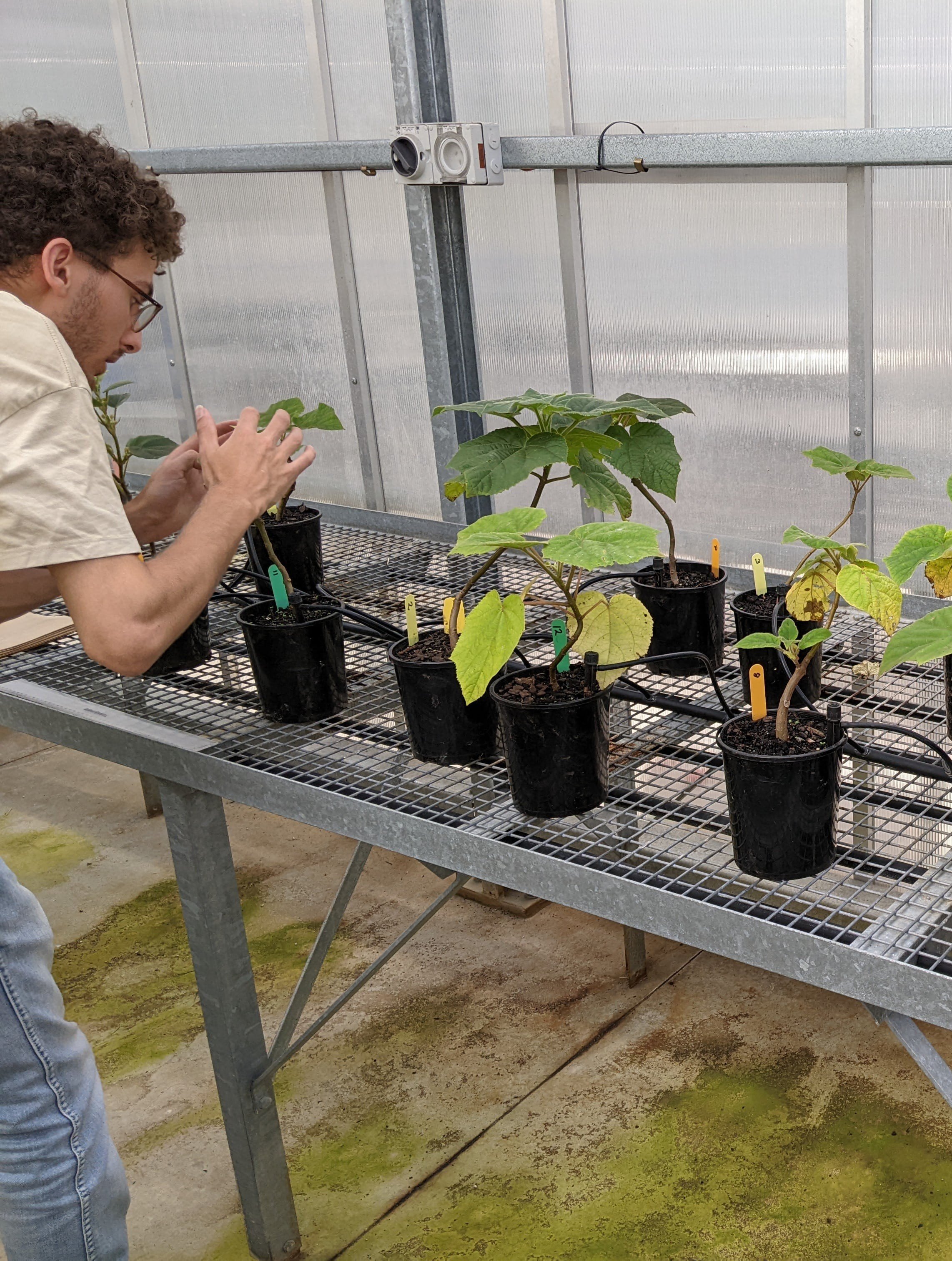
Biotechnology
What is Biotechnology?
Biotechnology is Monash Carbon Capture & Conversion’s biological stream, with a focus on a circular system, the team lab-cultivates CO2-rich microalgae and plants capable of intaking large amounts of CO2, which are then turned into biomass feedstock and sent to our pyrolysis rig to produce biochar, which improves the CO2 uptake by microalgae and plants!
This sub-team consists of student engineers working on two unique streams:
Sequestration - specifically focuses on cultivating biological organisms like microalgae, sorghum and paulownia to become CO2 storing champions!
Carbon Capture - focuses on the development and the use of the nutrient-rich biochar for our Paulownia and Sorghum plants to aid their growth and enhance their carbon absorption from the atmosphere.
Figure 2. Agroforestry (left) & Algae Cultivation (Middle & Right)
MORE ABOUT THE TECH
Figure 1. Photobioreactor (left) & Algae Culture (right)
what are we working on?
Our Biotechnology team has identified plant species with exceptional carbon capture potential. First, Empress trees (Paulownia spp.) excel in capturing carbon, have deep roots, and can be harvested multiple times without replanting. Second, Sorghum shows potential as a ground cover crop able to rapidly accumulate biomass and retain soil carbon. These species can be interplanted to enhance carbon storage and offer additional environmental benefits.
They are also developing specialised bio-reactors and optimising the pyrolysis process to transform microalgae and plant matter into biochar for long-term carbon storage.
Our goal is to develop a continuous biological system that effectively utilises these technologies to continuously capture and store carbon biologically, creating a positive feedback loop!
Figure 3. Sorghum Plants with Biochar (left) & Greenhouse for Forestry(right)
Our approach focuses on growing multiple plants with differing growth cycles. Biochar is added to soil to augment soil carbon sequestration rate, while enhancing nutrient uptake and water retention. Intercropping different species helps to preserve soil integrity while avoiding monocultures, creating a range of environmental benefits.
Agroforestry fills an important niche in the carbon capture world as it requires no substantial technological advancements to be effective. As a team, we hope we can utilise this technology to improve poor-quality soils, and gradually remediate them while simultaneously storing carbon. The biomass generated can be used to create cross-laminated timber, or supplement biochar production.








